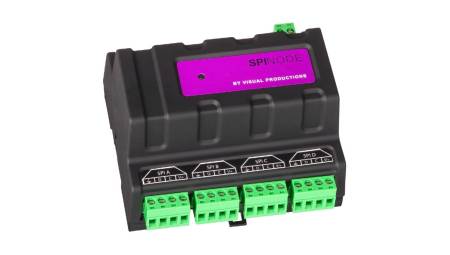Colombia. The digitalization of operations in strategic sectors such as transportation, logistics, health and safety has made IoT devices a fundamental pillar to guarantee connectivity and service availability. However, the progressive disconnection of 2G and 3G networks in Colombia has put their continuity in check, forcing companies to update much of their deployed equipment.
According to data from the Ministry of Information and Communications Technologies (MinTIC), the penetration of IoT devices in the country has grown by 14% annually in the industrial sector and 20% in the logistics sector. However, it is estimated that, by 2025, more than 65% of connected devices in Colombia will operate exclusively on 4G and 5G networks, which will force companies to adapt their technological infrastructure to avoid service interruptions.
The Connectivity Challenge: Shade Areas and Poor Quality Devices
In recent years, many companies offering machine-to-machine (M2M) services have procured hundreds of thousands of IoT devices in Asian countries, primarily prioritizing cost.
However, experience as telecommunications operators has shown that, despite the inevitable coverage limitations in mountainous, jungle or highly congested areas, in many cases, the main cause of service failures has not been the network, but the devices themselves.
These equipment, when they lost connectivity, were not able to automatically reconnect to another mobile network, becoming inactive and leaving the service out of operation. This situation highlights the importance of selecting devices not only based on price, but also on their technical capabilities. Most of the devices that presented this problem were low-end, with questionable quality and without the proper specifications to operate in changing environments.
"We encounter devices every day that are unable to adapt easily to such a changing environment. A common problem is the search for an alternative network in the same operating band or the execution of a fallback to another access technology (2G, 3G, 4G or 5G), and then return with guarantees to the original band. This requires equipment with well-designed firmware, which contemplates all operating scenarios, and operators that facilitate rapid network change. This combination makes all the difference in a dynamic environment," explains Rafael Escobar, IoT/M2M Channel Manager at Alai Secure.
"On other occasions, a simple regulatory change in the operating band of a country, which was not properly contemplated in the firmware of the device, has made it impossible to use that band, limiting connectivity. We have also detected failures in the implementation of fallback, which prevent the return to the source network. Fortunately, at Alai Secure we have learned together with our clients to identify these scenarios quickly and to offer effective solutions," adds Escobar.
In Europe, mobile network operators have begun to require the certification of IoT devices used in M2M services with the aim of reducing technical incidents arising from equipment problems as much as possible. With this, devices cease to be an anonymous factor within connectivity and are consolidated as key pieces within the value chain.
An obsolete fleet of devices in the face of the 2G and 3G blackout
Added to this challenge is the fact that the vast majority of IoT devices currently deployed are not prepared for the blackout of 2G and 3G networks, which in some countries, such as Colombia, is already underway. A recent study found that at least 38% of IoT devices in Colombia still rely on 2G and 3G networks, putting service continuity at risk.
In addition, the lack of certification and updating of this equipment can lead to problems such as:
- Low signal search efficiency, resulting in long reconnection times.
- Lack of fallback capability, preventing automatic switching between available networks.
- Outdated firmware, reducing the stability and security of the connection.
- Limited multi-band compatibility, affecting performance in environments with coverage variability.
- How to ensure IoT connectivity: keys to a secure transition
To avoid these problems and ensure uninterrupted connectivity, Alai Secure, a leader in M2M communications, recommends that companies adopt resilient connectivity strategies, such as:
✅ Use of multi-operator SIM cards: They allow devices to have a backup mobile network in case of loss of coverage, guaranteeing continuity of service.
✅ Device update and certification: Having equipment certified and optimized to operate on 4G and 5G networks, with automatic fallback capabilities, prevents obsolescence and improves efficiency in data transmission.
✅ Remote monitoring and management: Implementing management platforms in the cloud allows you to monitor connectivity in real time and make adjustments or updates without physical intervention.
✅ Firmware optimization and device calibration: Ensuring devices have the latest firmware and are properly calibrated improves network discovery and connection stability.
In a market where connectivity is the central axis of digitalization, IoT devices play a strategic role in optimizing operations and service continuity. Investment in state-of-the-art technology and the implementation of intelligent connectivity solutions will be decisive in guaranteeing the stability of the service in an increasingly demanding environment.
















